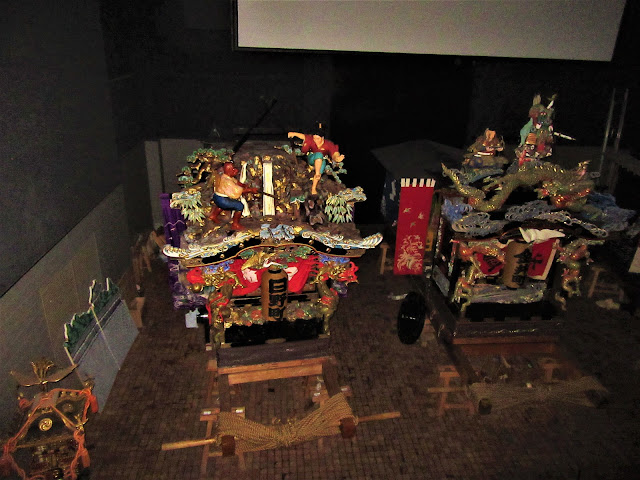The first museum we visited in Nasukarasuyama was Nakagawacho Batchohiroshinge Museum. The autumn special exhibition 60th anniversary was a commemoration of a French painter PAUL JACLAY.
Here is some history about the building's architecture. The building was designed by Kengo Kuma, who was inspired by Frank Lloyd Wright He used fire-resistant wood to build the Bato Hiroshige Museum. Cedar grown in nearby mountains was used for the roof to create an image representing the evening shower in one of the artist’s most famous works. Stone, craft paper and other local materials feature prominently in the building. Kengo Kuma is also designing the 2020 Olympic stadium.The museum is a site that displays the traditional ukiyo-e prints of Utagawa Hiroshige.

Kengo used wooden louvers made of local cedar to materialize this superposition of layers. The cedar was treated with fireproofing and rot-proofing processes to allow us to use it on the roof.
Beautiful fall foliage behind the building. The colors were so bright and vivid. It made me smile just to stand and look at the beauty.
Kengo Kuma's work is greatly influenced the architecture of Frank Lloyd Wright.

We also visited Yama'age Kaikan Museum.
We watched a movie which showed the Yama'age Festival. The movie showed all the magnificent mikoshi (similar to a float in the USA) used in the festival and how they were made. 



The famous robot “Kansuke Grandfather” explains the festival in a fun and interesting manner in Tochigi.
A miniature drama of the mountain climbing festival that scales the actual stage and cityscape to 1/5. 
The museum has replicas of the mikoshi which is a sacred religious palanquin (also translated as a portable Shinto shrine). Shinto followers believe that it serves as the vehicle to transport a deity in Japan while moving between the main shrine and temporary shrine during a festival or when moving to a new shrine.















